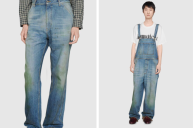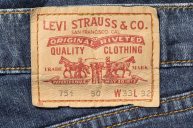Throughout the years, on many forums and pages, people have enquired about the purpose of the metal studs, called rivets, on jeans. It's about time we put these questions to rest.
The Levi Jeans iconic metal studs are a staple of their design. It was patented in 1873, and have stayed the same since. Although they look undeniably cool, they have more than an aesthetic purpose.
People have been asking this question for years, and despite every question being properly answered, they don't go public enough to stop others asking the same question.
There are many joke answers to the origins behind the studs on jeans, but also a very historical one, too.
Jean Studs Boost The Longevity Of Jeans
If you are to ask a public forum about the nature of metal studs on jeans, you'll get a lot of silly answers.
"They're there to scratch my phone's screen," answers one.
Another says that they're to "punish you for taking your laundry out of the dryer too soon." I can feel this one.
"They're there to scratch your car's paint job when you lean over the front fender to check your oil," is a favorite of mine.
Jokes aside, these studs were to help laborers back in the days of mine-delving and the gold rush. Back then, you couldn't order new Levi Jeans off eBay and expect them to arrive the day after. Clothes had to last, and the primary gripe with jeans was that they'd tear at the stitching thanks to the heavy tools laborer's would have to carry around.
Jeans are durable in their own right, but stitches can only handle so much. The rivets would strengthen the key weak points where the clothes were prone to tearing, making them last longer. This was a huge upgrade, and the design stuck around.
These days, the studs are purely for aesthetic purposes, as some manufacturers will simply glue the studs on. Proper rivets on jeans are still commonly available, however.




